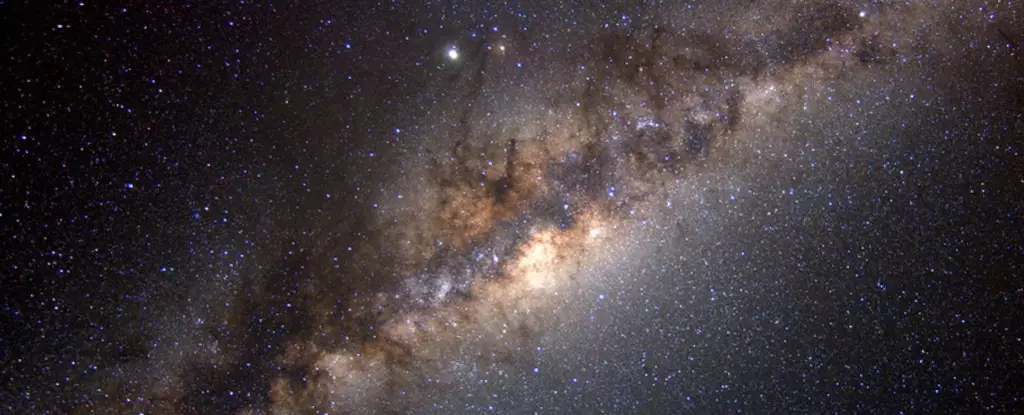When we think of the Milky Way, we often picture a massive spiral galaxy that has existed for billions of years. However, recent studies by astronomers have uncovered evidence suggesting that there are remnants of an even earlier era surrounding us. A group of researchers from MIT made a groundbreaking discovery – three ancient stars orbiting the outskirts of the Milky Way. These stars are believed to have formed over a billion years ago, originating from a smaller galaxy that was eventually absorbed by our own Milky Way.
The Milky Way, our celestial home, stretches an impressive 100,000 light-years from end to end and houses not only our Solar System but also an estimated 400 billion other stars. On a clear night, one can gaze up at the sky and witness the mesmerizing band of hazy light that encompasses the combined glow of all the stars within our galaxy. If viewed from afar, the Milky Way would resemble a pair of celestial fried eggs fused together.
The journey of discovery begins in 2022 during an observational stellar archaeology course at MIT, where students delved into the study of ancient stars. Armed with data from the Magellan-Clay telescope at Las Campanas Observatory, the students embarked on a quest to identify stars that had formed in the early stages of the Universe, characterized by high concentrations of hydrogen, helium, strontium, and barium. After meticulous analysis, the team pinpointed three stars that exhibited the expected chemical composition of ancient stars, estimated to have originated between 12 and 13 billion years ago.
A key puzzle that puzzled the researchers was the origin of these ancient stars within the relatively young Milky Way. To shed light on this mystery, the team analyzed the orbital patterns of the stars and observed that their movement contradicted the majority of stars in the Milky Way. The retrograde motion of these stars, coupled with their unique chemical signatures, strongly suggests that they originated from outside our galaxy. This revelation has sparked a newfound interest in identifying additional ancient stars hidden within the vast expanse of the Milky Way.
As the team refines their methods for identifying ancient stars, they plan to expand their search and uncover more of these celestial relics. However, with a staggering 400 billion stars populating the Milky Way, a more efficient approach must be developed to locate and study these ancient cosmic inhabitants. The potential discoveries awaiting within our galaxy could provide invaluable insights into the formation and evolution of the Universe as a whole.


Leave a Reply